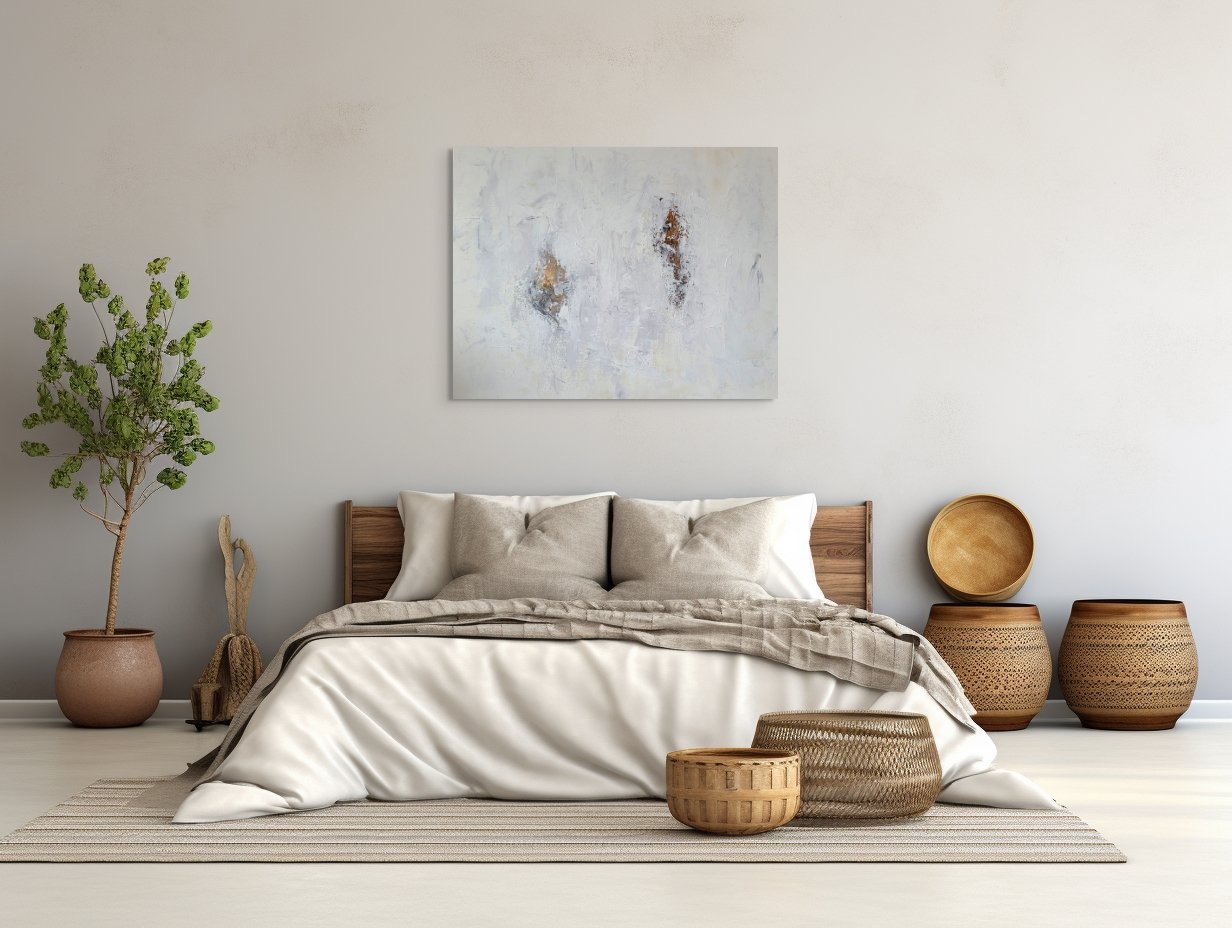Finding the Right Balance: Pairing Wall Art with Functional Spaces in a New Home
Moving into a new home gives you a blank slate. Walls stand empty, waiting for personality. But art must do more than look good. It must fit the space and serve a purpose. Pairing wall art with functional spaces allows your home to feel intentional.
A well-placed piece can set the mood, anchor a room, or create a focal point. Many struggle with choosing the right art. Should a kitchen have framed prints? Does a bedroom need bold colors? Before deciding, consider the room’s function. A home office needs motivation. A hallway deserves a welcoming touch. In a living room, art speaks. From scenic landscapes to the world of abstracts, each choice affects how a room feels.
Understand Your Space
Every room has a function. The best art supports that function. A relaxing space benefits from calm tones. A creative space needs energy. A well-chosen piece makes a difference. Before picking art, examine the walls. Notice where the light falls. Shadows change how colors look. High-traffic areas demand durable materials. Art should not compete with storage or furniture. Instead, it should enhance the space.
Consider these questions before choosing art:
● What emotions should the room inspire? A bedroom needs peace. A kitchen benefits from warmth.
● How does the space function daily? A busy workspace requires focus. A lounge area invites conversation.
● What features stand out? A fireplace or bookshelf changes where art belongs.
Blend Old and New Art Pieces Seamlessly
Bringing art from an old home into a new space adds history and character. A well-placed vintage piece can anchor a room, while newly purchased art enhances the overall aesthetic. Balancing old and new creates a layered, intentional look that feels personal. However, mismatched styles can clash, making the space feel disjointed. Choosing a common color palette or similar frame styles helps unify different pieces.
Moving delicate art requires careful handling. Paintings need sturdy, climate-controlled packaging. Framed prints should be wrapped in bubble wrap and secured in hard-sided boxes. Custom crates offer the best protection for valuable pieces. Labeling boxes as fragile prevents damage during transport. Rushing this process can lead to costly mistakes. Taking time to protect art during relocation ensures that beloved pieces arrive in perfect condition. Thoughtful packing and placement allow older art to blend seamlessly into a fresh new space.
Choosing an artwork with similar colors and style helps to complement your space.
Choose the Right Art for Key Functional Areas
Every piece of art is beautiful in a unique way, but not every piece will be suitable for each room.
The Living Room Should be Expressive Yet Balanced
A living room sets the home’s tone. Large statement pieces work well. They bring depth and focus. A single bold canvas grabs attention. Multiple smaller frames tell a story. The key is balance. If the furniture is neutral, the art can shine. If the decor already pops, subtle art keeps things grounded.
A Kitchen Should be Functional Yet Inviting
Many overlook kitchens when decorating. But a well-placed print adds charm. Small framed pieces near shelves work well. Avoid large canvases near heat or moisture. Chalkboards or vintage signs combine function and aesthetics.
The Bedroom Is A Retreat for the Mind
A bedroom needs soft, restful artwork. Abstracts with muted colors work well. Framed fabric art adds warmth. Nature scenes create serenity. Avoid clutter. One or two well-placed pieces calm the space.
Create A Motivational Yet Uncluttered Home Office
A home office needs energy without distraction. Black-and-white photography or motivational quotes work well. Wall shelves with framed prints create interest. Avoid cluttered gallery walls in small offices. Keep it simple yet inspiring.
Scale, Proportion, and Placement
A great piece loses impact if placed wrong. A tiny print on a big wall looks lost. An oversized piece in a small room can influence the room's functionality. Pairing wall art with functional spaces works best when proportion fits the area. Height matters. Art should sit at eye level. Large pieces anchor a room. Smaller ones complement shelves or side tables. Grouped art should have even spacing. A well-spaced wall feels intentional and polished.
ADD PERSONALITY WITH A GALLERY WALL
Some love curating a gallery wall. This works well in hallways or living rooms. When done right, it looks effortless. Choose a central piece, then arrange others around it. Frames should complement each other. Different sizes keep things interesting.
Pairing wall art with functional spaces requires you to think about the proportions and placement
Mix Aesthetics with Functionality
Walls serve more than a decorative purpose. They hold memories, inspire creativity, and support daily tasks. The best spaces combine beauty with usefulness. Pairing wall art with functional spaces works best when design and function meet.
Shelves provide storage, but they also display art. Floating shelves hold framed prints while keeping books within reach. Mirrors add depth while reflecting light. Corkboards mix artwork with reminders. A balanced space never sacrifices function for aesthetics. For families, framed chalkboards help organize schedules. A child’s playroom benefits from playful, educational prints. A dining area gains warmth with simple typography. A carefully chosen piece makes a room feel complete.
SHOWN: MAN CAVE Original Canvas Art Painting
Create a Cohesive Color and Style Theme
A well-planned home feels intentional. Wall art should connect with the space around it. Color influences mood. A room with soft tones needs subtle art. A bold space benefits from neutral prints. A unified look keeps a home inviting.
Frames matter. Black frames feel modern. Wood frames bring warmth. A mix of styles adds character. Keep some consistency. Art should complement, not compete. The balance between decor and wall art keeps a space polished. Lighting changes how art looks. A well-lit piece stands out. Natural light enhances soft colors. Spotlights add drama to textured prints. Proper lighting turns a simple piece into a statement.
Personalize Your Home with Meaningful Art
A house feels like home when personal elements shine. Art tells stories. A travel photograph recalls adventures. A family portrait warms a space. A home reflects the people inside it. Some love DIY artwork. Handmade prints or painted canvases add uniqueness. A gallery wall with personal mementos feels inviting. Curating a gallery wall makes a space feel lived in. To make a home feel more personal, consider these ideas:
● Display sentimental pieces. A framed letter or an old postcard adds charm.
● Mix professional and personal art. A painting next to a child’s drawing keeps things balanced.
● Use unexpected spaces. Art above a door or on a stair landing surprises guests.
A space with character feels warm. Adding a personal touch to your decor turns a house into a home.
Pairing Wall Art with Functional Spaces Will Make Your Home Beautiful and Practical
A well-decorated home balances style with function. Pairing wall art with functional spaces improves both look and purpose. A carefully chosen piece enhances a room. Art creates mood, tells a story, and shapes an environment. Every space benefits from thoughtful choices. A simple swap transforms a wall. A personal touch makes a space inviting. Your home deserves art that reflects you.
Images used:
https://www.pexels.com/photo/woman-walking-on-fence-1548769/
https://unsplash.com/photos/brown-short-coated-dog-on-brown-wooden-parquet-floor-JaWhDrtNlXw
https://unsplash.com/photos/woman-in-black-long-sleeve-shirt-mUQDlgQ3VqI
https://www.pexels.com/photo/a-couple-doing-house-chores-5245942/







